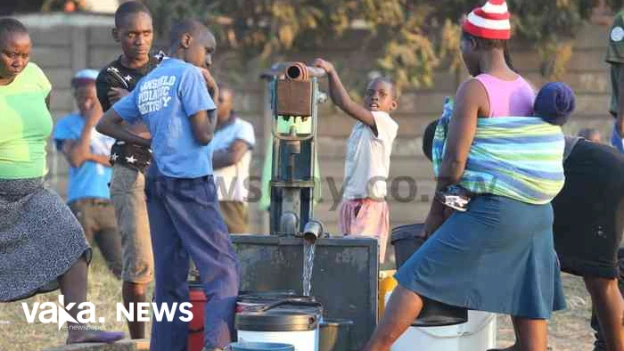50% Harare boreholes unsafe
- Category: General

- By Admin
Half of the boreholes in Harare’s western and northern districts are contaminated with human waste and could be potentially unsafe sources of drinking water. Water samples from boreholes in these locations, extensively relied upon by inhabitants due to inconsistent municipal water delivery, showed signs of sewage and E. coli bacteria, capable of causing water-borne diseases like typhoid and cholera. The finding was made at a time when cholera was spreading throughout Harare and was directly related to water scarcity. Currently, the city of Harare receives about 300 megalitres of drinkable water each day from the Harare City Council, compared to a demand of 1,200 megalitres. Harare’s western district covers suburbs such as Highfield, Glen Norah, Glen View, Mbare, Dzivaresekwa, Budiriro, Kuwadzana and Kambuzuma. The northern district covers Borrowdale, Glen Lorne, Glenwood Park, Newlands, Mabelreign, Highlands, Mabvuku, Tafara, Hatcliffe and Waterfalls. Dr Vere said council cannot decommission the contaminated boreholes because of water shortages affecting the city. Instead, he said authorities were installing inline chlorinators on some of the boreholes to ensure the water was fit for human consumption. Due of this shortage, locals are forced to get their daily water from unconventional sources, such as boreholes. The discovery of E. Coli in the water samples raises severe concerns about the health dangers involved with drinking borehole water because it suggests that the boreholes may have been contaminated by feces. Dr. Michael Vere, the City of Harare's epidemiology and disease control officer, verified the development. He stated, "As the Harare City Council, we regularly monitor the quality of the water in areas that are known to have cholera and typhoid cases." "We have discovered through our monitoring program that sewage and human waste are contaminating 50% of the boreholes in the western and northern districts." "We can only produce 300 megalitres of water per day, but Harare and the surrounding areas, like Chitungwiza, require about 1,200 megalitres per day." However, due of Harare's water problems, some but not all of the boreholes have been deactivated. He stated that the majority of the city's potable water pipes were installed in the 1960s and require replacement. He said, "We also do inline chlorination, which involves injecting chlorine into boreholes to treat the water." Experts in health have linked the rise in water-borne illnesses in the capital to the council's neglect of infrastructure upkeep and repairs. “All this culminates from dilapidated sanitation infrastructure which has outlived its lifespan. “What is needed is the revamping of both the water and sewer systems as a long-term plan,” said Dr Marisa. “Public health is under consequential attack and there is a high probability of increased morbidity and mortality from preventable diseases like cholera, typhoid, dysentery, and hepatitis A among other diseases.” Harare Residents Trust executive director, Mr Precious Shumba, said underground water and sewer pipes in the old high-density residential areas are dilapidated. 48 cholera-related deaths and 6,143 probable cases had been reported in Harare as of January 9. Since the disease's breakout last year, 16 568 suspected cases of cholera have been reported in Zimbabwe. "As the Ministry of Health, we conduct regular water quality monitoring and testing," stated Dr. Aspect Maunganidze, Permanent Secretary, Ministry of Health and Child Care. "Since the results are still pending, I don't want to confirm anything at this time." Dr. Johannes Marisa, head of the Medical and Dental Private Practitioners of Zimbabwe Association, stated that a comprehensive renovation of Harare's drainage system was imperative. Contact Us Editorial: dion@vaka.co.zw Advertising: advertising@vaka.co.zw : news@vaka.co.zw Whatsapp: +263787980064






